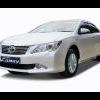Search the Community
Showing results for tags 'causes'.
-
A Singaporean man has been charged with dangerous driving over a four-car accident in New Zealand that killed a motorcyclist. Lew Wei Kiong, 29, had been due in the Dunedin District Court on Tuesday (Dec 8) to face a count of dangerous driving causing death. Three new charges of dangerous driving causing injury were also due to be brought against him, reported the Otago Daily Times, but the case has been adjourned to Dec 22. Lew, who works at the Energy Market Authority (EMA), was involved in the accident along the state highway in North Otago, about 20km south of Oamaru, on Nov 29. EMA confirmed to Shin Min Daily News that Lew was an employee and that it was extending aid to two employees in New Zealand. According to stuff.co.nz, Lew was driving a rented Toyota and had allegedly crossed the double yellow lines on the highway to overtake a group of cars. He crashed into two cars and a motorcycle travelling in the opposite direction. The passenger in the Toyota, who is also believed to be Singaporean, had to be cut from the car and was flown to Dunedin Public Hospital with serious injuries. Five others suffered injuries, while the motorcyclist, 39-year-old Craig Alan Chambers, died at the scene. New Zealand police had blamed the car crash on driver "inattention". The accident also reportedly reignited a debate over tourist drivers and the condition of roads in New Zealand, with Labour Party MP Damien O'Connor suggesting that poor road design could have led to the crash. He said that certain roads on the country's south island could be confusing for foreign drivers and clearer signage was needed. http://www.straitstimes.com/asia/australianz/singapore-tourist-charged-with-dangerous-driving-after-fatal-crash-in-new-zealand?utm_campaign=Echobox&utm_medium=Social&utm_source=Facebook#xtor=CS1-10
- 190 replies
-
- 5
-

-
- crash
- new zealand
-
(and 6 more)
Tagged with:
-
Just to share as a friend underwent a surgery due to this. Take note if you have persistent abdominal pain, it should not be ignored. https://www.healthline.com/health/hernia What is a hernia?A hernia occurs when an organ pushes through an opening in the muscle or tissue that holds it in place. For example, the intestines may break through a weakened area in the abdominal wall. Hernias are most common in the abdomen, but they can also appear in the upper thigh, belly button, and groin areas. Most hernias aren’t immediately life-threatening, but they don’t go away on their own. Sometimes they can require surgery to prevent potentially dangerous complications. Common hernia types Inguinal herniaInguinal hernias are the most common type of hernia. They make up about 70 percent of all hernias, according to the British Hernia Centre (BHC). These hernias occur when the intestines push through a weak spot or tear in the lower abdominal wall, often in the inguinal canal. The inguinal canal is found in your groin. In men, it’s the area where the spermatic cord passes from the abdomen to the scrotum. This cord holds up the testicles. In women, the inguinal canal contains a ligament that helps hold the uterus in place. This type of hernia is more common in men than women. This is because a man’s testicles descend through the inguinal canal shortly after birth, and the canal is supposed to close almost completely behind them. Sometimes, the canal doesn’t close properly and leaves a weakened area prone to hernias. Hiatal herniaA hiatal hernia occurs when part of your stomach protrudes up through the diaphragm into your chest cavity. The diaphragm is a sheet of muscle that helps you breathe by contracting and drawing air into the lungs. It separates the organs in your abdomen from those in your chest. This type of hernia is most common in people over 50 years old. If a child has the condition, it’s typically caused by a congenital birth defect. Hiatal hernias almost always cause gastroesophageal reflux, which is when the stomach contents leak backward into the esophagus, causing a burning sensation. Umbilical herniaUmbilical hernias can occur in children and babies under 6 months old. This happens when their intestines bulge through their abdominal wall near their bellybutton. You may notice a bulge in or near your child’s bellybutton, especially when they’re crying. An umbilical hernia is the only kind that often goes away on its own as the abdominal wall muscles get stronger, typically by the time the child is 1 years old. If the hernia hasn’t gone away by this point, surgery may be used to correct it. Incisional herniaIncisional hernias can occur after you’ve had abdominal surgery. Your intestines may push through the incision scar or the surrounding, weakened tissue. What causes a hernia? Hernias are caused by a combination of muscle weakness and strain. Depending on its cause, a hernia can develop quickly or over a long period of time. Common causes of muscle weakness include: failure of the abdominal wall to close properly in the womb, which is a congenital defect age chronic coughing damage from injury or surgery Factors that strain your body and may cause a hernia, especially if your muscles are weak, include: being pregnant, which puts pressure on your abdomen being constipated, which causes you to strain when having a bowel movement lifting heavy weight fluid in the abdomen, or ascites suddenly gaining weight surgery in the area persistent coughing or sneezing Am I at the risk of hernia? The factors that increase your risk of developing a hernia include: a personal or family history of hernias being overweight or obese a chronic cough chronic constipation smoking, which can trigger a chronic cough Conditions such as cystic fibrosis can also indirectly increase your risk of developing a hernia. Cystic fibrosis impairs the function of the lungs, causing a chronic cough. What are the symptoms of hernia? The most common symptom of a hernia is a bulge or lump in the affected area. In the case of an inguinal hernia, you may notice a lump on either side of your pubic bone where your groin and thigh meet. You’re more likely to feel your hernia through touch when you’re standing up, bending down, or coughing. If your baby has a hernia, you may only be able to feel the bulge when they're crying. A bulge is typically the only symptom of an umbilical hernia. Other common symptoms of an inguinal hernia include: pain or discomfort in the affected area (usually the lower abdomen), especially when bending over, coughing, or lifting weakness, pressure, or a feeling of heaviness in the abdomen a burning, gurgling, or aching sensation at the site of the bulge Other symptoms of a hiatal hernia include: acid reflux, which is when stomach acid moves backward into the esophagus causing a burning sensation chest pain difficulty swallowing In some cases, hernias have no symptoms. You may not know you have a hernia unless it shows up during a routine physical or a medical exam for an unrelated problem. How is hernia diagnosed? Inguinal or incisional hernias are usually diagnosed through a physical examination. Your doctor may feel for a bulge in your abdomen or groin that gets larger when you stand, cough, or strain. If you have a hiatal hernia, your doctor may diagnose it with a barium X-ray or endoscopy. A barium X-ray is a series of X-ray pictures of your digestive tract. The pictures are recorded after you’ve finished drinking a liquid solution containing barium, which shows up well on the X-ray images. An endoscopy involves threading a small camera attached to a tube down your throat and into your esophagus and stomach. These tests both allow your doctor to see the internal location of your stomach. If your child has an umbilical hernia, your doctor may perform an ultrasound. An ultrasound uses high-frequency sound waves to create an image of the structures inside the body. Treatment options of hernia Whether or not you need treatment depends on the size of your hernia and the severity of your symptoms. Your doctor may simply monitor your hernia for possible complications. Treatment options for a hernia include lifestyle changes, medication, or surgery. Lifestyle changesDietary changes can often treat the symptoms of a hiatal hernia, but won’t make the hernia go away. Avoid large or heavy meals, don’t lie down or bend over after a meal, and keep your body weight in a healthy range. Certain exercises may help strengthen the muscles around the hernia site, which may reduce some symptoms. However, exercises done improperly can increase pressure at that area and may actually cause the hernia to bulge more. It’s best to discuss what exercises to do and not do with your doctor or physical therapist. If these changes don’t eliminate your discomfort, you may need surgery to correct the hernia. You can also improve symptoms by avoiding foods that cause acid reflux or heartburn, such as spicy foods and tomato-based foods. Additionally, you can avoid acid reflux by losing weight and giving up cigarettes. MedicationIf you have a hiatal hernia, over-the-counter and prescription medications that reduce stomach acid can relieve your discomfort and improve symptoms. These include antacids, H-2 receptor blockers, and proton pump inhibitors. SurgeryIf your hernia is growing larger or causing pain, your doctor may decide it’s best to operate. Your doctor may repair your hernia by sewing the hole in the abdominal wall closed during surgery. This is most commonly done by patching the hole with surgical mesh. Hernias can be repaired with either open or laparoscopic surgery. Laparoscopic surgery uses a tiny camera and miniaturized surgical equipment to repair the hernia using only a few small incisions. Laparoscopic surgery is less damaging to the surrounding tissue. Open surgery requires a longer recovery process. You may be unable to move around normally for up to six weeks. Laparoscopic surgery has a much shorter recovery time, but the risk of your hernia reoccurring is higher. In addition, not all hernias are suitable for laparoscopic repair. This includes hernias where a portion of your intestines has moved down into the scrotum. Potential complications of hernia If left untreated, your hernia may grow and become more painful. A portion of your intestine could become trapped in the abdominal wall. This can obstruct your bowel and cause severe pain, nausea, or constipation. An untreated hernia can also put too much pressure on nearby tissues. This can cause swelling and pain in the surrounding area. If the trapped section of your intestines doesn’t get enough blood flow, strangulation occurs. This can cause the intestinal tissue to become infected or die. A strangulated hernia is life-threatening and requires immediate medical care. Preventing a hernia You can’t always prevent the muscle weakness that allows a hernia to occur. However, you can reduce the amount of strain you place on your body. This may help you avoid a hernia or keep an existing hernia from getting worse. Prevention tips include: not smoking seeing your doctor when you’re sick to avoid developing a persistent cough maintaining a healthy body weight avoiding straining during bowel movements or urination lifting objects with your knees and not your back avoiding lifting weights that are too heavy for you OutlookIt’s important to recognize the early signs of a hernia. An untreated hernia will not go away on its own. However, with early medical care or lifestyle changes, you can minimize the effects of a hernia and avoid life-threatening complications like strangulation.
- 2 replies
-
- 2
-

-
- hernia
- intestine injury
-
(and 4 more)
Tagged with:
-
A Chinese national woman caused a commotion at Ang Mo Kio Hub yesterday after she pushed her boyfriend, who hit and shattered a glass door. The incident happened at about 2.25pm on 25 Feb in the popular mall located opposite Ang Mo Kio MRT station. Nearby shop staff say that the Chinese national woman, in her 40s, had been shopping in a mobile phone shop when her boyfriend, a 56-year-old Singaporean man appeared. The moment the woman saw her boyfriend, the two started quarreling. In the course of their fight, believed to be over money, the woman repeatedly hit and pushed the man. Just as they were passing a beauty salon, the woman pushed the man hard enough for him to lose his balance and fall towards the glass door. The glass door shattered after the man impacted it with his head and back as he fell. As a result of the commotion, police were alerted. Officers arrived shortly and were seen taking statements from the couple. The beauty salon happens to be owned by former TV actress Chen Hui Hui. Ms Chen told reporters that the man has apologised over the incident and has given her compensation for the shattered door. Link Feisty!
-
Driving a Nissan Sylphy. Lately I noticed a vibrating noise coming from the engine at low revs (intermittent) whenever the air-con is switched on. At higher revs, the vibrating noise disappears. Without the air-con switched on, there is no vibrating noise heard. Any idea what could be the problem? Is it serious? Car COE is expiring in May 2016, so I don't want to spend too much money on it.
-
This video is really interesting. How A Single Car Causes A Phantom Traffic Jam Interesting videos. Sure got people knows about it.. but just like to share http://9gag.com/tv/p/a1qGED/traffic-jam-without-bottleneck-experimental-evidence
- 27 replies
-
- 6
-

-
- jams
- traffic jams
-
(and 4 more)
Tagged with:
-
It might be safer to give the right amount of money to food sellers, and not get back any change from them. A local study has found two types of bacteria on currency notes and coins obtained from a local canteen. The bacteria found are of the S. aureus and B. cereus species, which are among the most common bacteria types that lead to food poisoning. The canteen cannot be named due to an agreement it has with the researchers. Ten two-dollar notes, five one-dollar coins and five 10-cent coins were acquired from the canteen on a day in July for the Lifebuoy Germ Protection Study. Conducted by an independent microbiology laboratory, it found both the notes and coins had bacteria, though the amount was not measured. Source: http://www.straitstimes.com/breaking-news/...-study-20121013
-
http://www.channelnewsasia.com/news/singapore/negligent-drivers-who/1345462.html?cid=FBSG Finally, stiffer laws for negligent driving that causes death
- 34 replies
-
- 6
-

-
- negligent driving
- default
- (and 5 more)
-
I thought that I have been reading more about cars burning down on the roads. Indeed, earlier reports say that 106 cars caught fire in 2013, up from 100 in 2012. Meanwhile, 9 more motorcycles caught fire last year, as the number of cases rose by close to 40 per cent, to 32 cases last year. Are our cars getting lousier, or do people not know how to maintain their cars anymore? SCDF: Overheating and engine electrical faults are main causes for vehicle fires Published on Apr 05, 2014 5:46 PM By Hoe Pei Shan The Singapore Civil Defence Force (SCDF) issued an advisory on preventing and handling vehicle fires after a taxi burst into flames on Saturday. No injuries were reported in the Lornie Road incident, which occurred at about 1pm. The SCDF went on to advise that most vehicle fires in Singapore occur while vehicles are travelling, often caused by ignition sources such as overheating and electrical faults within the engine compartment. It said motorists should take their vehicles for regular servicing and checks on the electrical, engine and fuel systems. http://www.straitstimes.com/breaking-news/singapore/story/scdf-overheating-and-engine-electrical-faults-are-main-causes-vehicle-
-
http://www.facebook.com/l.php?u=http%3A%2F...3CrTg7h&s=1
-
Now he also chup motor insurance liao? Anyway a good reminder article nonetheless Just doubt the relevant folks would listen... From ST Forum: http://www.straitstimes.com/premium/forum-...claims-20121113 Motor insurers should tackle root causes of inflated claims Published on Nov 13, 2012 ACCORDING to the General Insurance Association of Singapore, regulations introduced in May last year require motorists making property damage claims to give other motorists or their insurers the opportunity to inspect the damage to the vehicles before repairs are undertaken ("Pre-repair inspection rule for accident vehicles"; last Friday). The association should state the percentage of third-party claims that follow this regulation. Anecdotal evidence indicates that payments for third-party damages continue to be high, contributing to hefty motor insurance premiums. Also, are a significant proportion of these claims made through lawyers, and do their fees add to the cost of the claims? Perhaps the insurer paying the claim should also be given the opportunity to settle it without the need to incur legal fees. The requirement to report directly to the paying insurer should be made mandatory by law, rather than being a non-binding regulation by the insurance industry. This will be more effective in addressing the exorbitant cost of third-party claims. In my consulting work in the region, I know that the cost of motor repairs in Singapore is several times that in neighbouring countries. While this can be partly explained by the higher cost of doing business here, the scale of the difference indicates that there are other contributing factors. The motor insurance industry should address the root causes of inflated claims and bring relief to consumers, who now continue to suffer increases in premiums. Tan Kin Lian President Financial Services Consumer Association
-
Money? Poor Communication? in-Laws? Children? Work schedule? No sex? Old birds please share your experience
-
As above, nearly got into an accident today at orchard road.. from left 1st lane was bus lane i was at 2nd and this woman driver driving a golf was at 3rd lane.. then suddenly she swerve into my lane and nearly hit onto me.. till i siam to the left and horn then she move back to her lane.. Lucky there was no bus/car on the left.. just wondering if i do have evidence showing she was the 1 who cause me to swerve to the left and say i hit an vehicle, in this case who is liable? Assuming she run away or she stay..
-
STOMPer Jamin was at Boon Lay MRT station at 8am this morning when she saw a passenger fall down the escalator. This caused a domino effect, as other commuters on the escalator were knocked over as well. Said the STOMPer: "This incident happened on 19th March at around 8am at Boon Lay MRT. "Many passengers were taking the escalator to the MRT platform when a passenger fell and rolled down the escalator. "This caused a domino effect and those behind him fell too. "The escalator was stopped and MRT staff came to render assistance. "The infrastructure in Singapore is unable to support the rate in which the population is growing."
-
What your view on this? Cause for myself, I realise that when I am traveling on KPE, I will be very focused on my speedometer to ensure I do not exceed 70KM/H. Due to this, I spend less time looking at the road. Then I also experience several times where the vehicle in front of me brake very hard when approaching speed camera (ed speed 90 but vehicle brake till 80). I assume its to prevent himself from overshooting the 90 limit. Due to this, I just wonder whats the real purpose of speed cameras? Do they actually make the road safer or create accidents instead?
-
Don't chiu all think so? they humji when driving. Always slow down when changing lanes. Cars behind all have to slow down as well. Then drive at a humji speed on the road. If everyone is driving fast, there will be no jams. Its those slow drivers who hog the road and cause jams!
-
Soft rubber like the face of the cordless phone or the grip of camera becomes sticky, as if it melting gradually.... Just want to know if anyone experienced this at home?
-
Anyone has experience or knowledge about what causes power trip ? I suspect my room aircon blower to cause power trip, last night 4 times, had to wake up to switch on the main power throughout the night, now i want to sleep on my notebook liao. I narrow down the main suspect to the aircon blower in room is because i isolated one by one until this one. So what can be wrong, is it the electrical component or board kaput liao ? How ah ?
-
Good article although somewhat technical. Maybe the road planners here should read it. http://arstechnica.com/news.ars/post/20080...of-anarchy.html
-
I'm driving a vintage 99'Atos GLSA The fan-Belt always squeal - especially when the weather is cold/wet or when the engine is cold. My mechanic - Rayspeed at Pioneer Circus - had adjusted the belt tension numerous times, but the problem still recurr. Now the mechanic says, "
-
Hi all, Please refer to the image for better understanding. I have come to notice my addon guard stained with petrol mark. I have tried to park my car with engine running or off, yet i dont find the leakage. any assistance is grately appreciated. I am sending my car for maintenace soon, just hope to see some idea on how to identify the issue. I am driving Mitsubishi Lancer 06 model. Thanks in advance.
-
This morning was raining heavily near Simpang bedok, thus decide to switch on my foggies. But realised my foggies switch button was stuck, normally will have a "tek" sound upon pressing. However, it did not, instead it was a slightly more than soft pressing pressure and realised the button was stuck and not able to release back. (with picture attached) So intend to on my hazard and stop by the side to check. Then while checking the button, my hazard not working, and trying my signal lights, not working too. Off & start my engine again, still the same, not working. (before intend to on my foggies, all signals are working after installation) The dat before(saturday), I installed ATF cooler on my ride. Front bumper required to be removed, and thus, will also required to disconnect my foggies cable. Here are my questions: - [ol] [*]removing foggies connection, requires to remove the foglite switch button? [*]is it possible the failure of signal lights due to the foggies? (fail to light up and no indication on dash) [*]is it the cable connection that is failing? As sunday this workshop was closed, thus, I'm not able to rectify with them. I wanna know more in order to drive down to check with them tomorrow. [/ol] To add, picture attached shows the chipped surface of the foglight button. Before installing the cooler, the button was very new.
-
Mon Dec 10, 2007 10:50am EST By Julie Steenhuysen CHICAGO (Reuters) - Mutations in the BRCA1 breast cancer gene appear to be linked with the loss of a protein important for putting the brakes on cell growth, a finding that could lead to new therapies, researchers said on Sunday. The breakthrough could lead to more effective therapies for women with an aggressive and especially deadly cancer known as triple-negative that does not respond to current advanced drugs, the researchers said. "It doesn't have a good target for therapy at this point," said Dr. Ramon Parsons of Columbia University Medical Center in New York, who worked on the study. Scientists have known for more than a decade that women with certain alterations in the BRCA1 gene were at high risk for breast cancer. What they have not understood is exactly how a mutation in this gene leads to cancer. Researchers at Columbia, working with at team at Sweden's Lund University, now believe mutations in the BRCA1 gene can leave cells incapable of repairing routine DNA damage. When such damage occurs in a protein called PTEN, which regulates the growth of cells, cell growth is unchecked and tumors form. Women with faulty copies of BRCA1 or BRCA2 have a 50 to 85 percent chance of getting breast cancer. Mutations in these genes account for 5 to 10 percent of breast cancer cases. Most breast tumors are called estrogen-receptor positive, because they are fuelled by the hormone estrogen. About 20 percent are HER2-positive, because a protein called HER2 is involved. A third type is driven by the hormone progesterone. These types of cancer have good treatments. Then there are basal-like or triple-negative tumors, so named because they lack estrogen, progesterone or HER2 receptors needed for most breast cancer drugs to work. UNCHECKED GROWTH "The basic idea is that BRCA1 is a repair enzyme that is involved in coordinating the repair of double strand DNA breaks," said Parsons said in a telephone interview. "When it is mutated, it is no longer present in a cell. If a cut occurs in PTEN, there is no way for this cell to fix it," said Parsons, whose study was published in Nature Genetics. "It is like cutting the brake cable on a car," he said. "If PTEN is broken, you turn on a pathway that tells the cell to grow. It tells the cell to start dividing. It tells the cell, 'don't die.'" Parsons said loss of the protein PTEN is how breast cancer gets started in women who have inherited the BRCA1 gene mutation. His team made the connection between BRCA1 and PTEN by searching for chromosome breaks within the PTEN gene. They scanned 34 biopsies taken from women with BRCA1 tumors. The PTEN gene had been split in two, but inadequately repaired in about one-third of the cancers. In some cases, entire sections of the gene were missing. They said these chromosomal mistakes trace back to the tumor's lack of BRCA1, which is charged with cell repair. He estimates that about 50 percent of BRCA1 breast cancers harbor mutated PTEN. "These tumors have very high frequency loss of the PTEN protein," Parsons said. In breast cancers from women with normal BRCA1, they rarely found large mutations in PTEN. "A lot of drug companies are working on this. There is reasonably good hope that this approach will improve therapy for patients," Parsons said. Basal-like breast tumors are also found in 10 to 20 percent of women whose cancer was not caused by BRCA1 or another gene. The researchers found PTEN is lost in most of these breast tumors as well. (Editing by Jackie Frank)
-
- Scientists
- discover
- (and 4 more)
-
hi all...encountered this in my friend's swift sport yesterday..slight drizzling..stopping at traffic light...want to test new mods....Rev rev abit....try to move off....at ard 2.5rpm...wheel spin like siao ting tong.....engine jerk....then slowly pickup instead...lose to SBS bus at left lane...MALU BIG TIME.... can anyone tell me what really causes wheel spins??? is it that the torque too much for the car???? alloy wheels too light??? tyres are crappy??? car too light??? any help is appreciated...


















